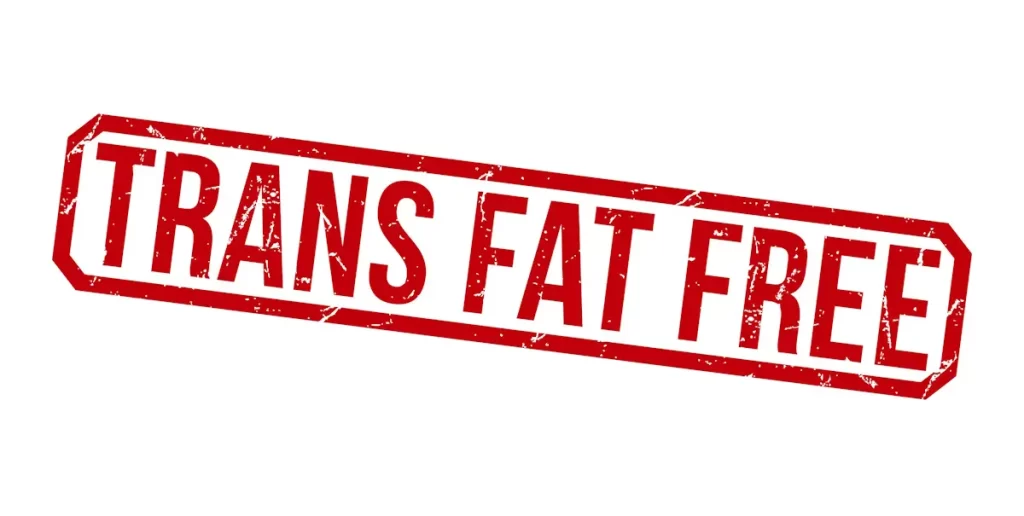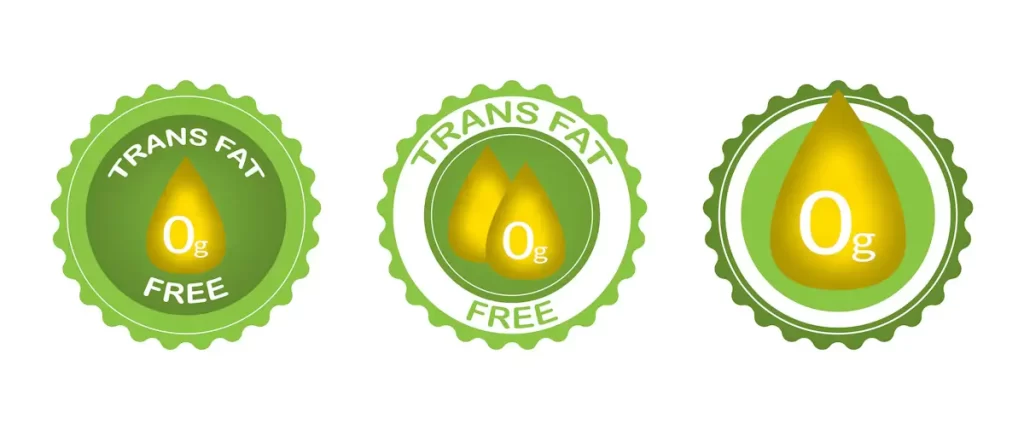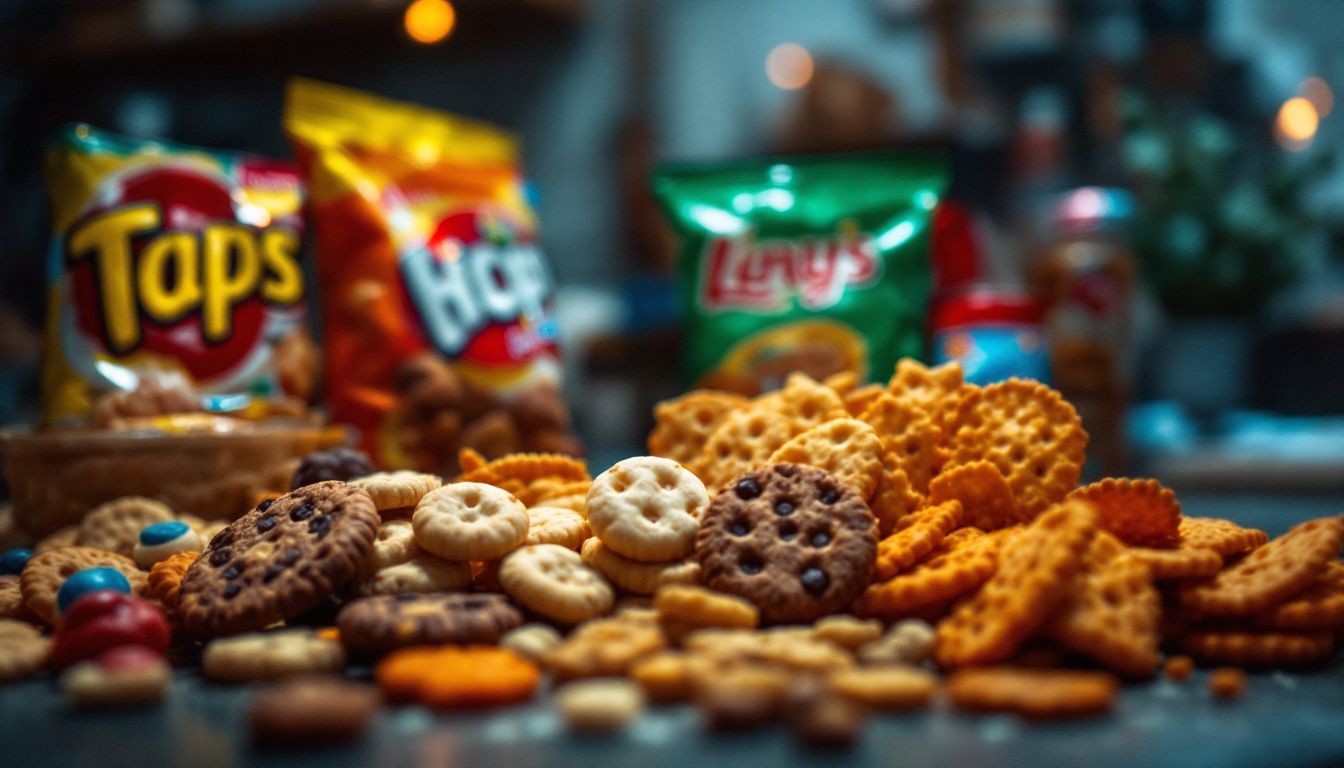Trans fats hide in many of the foods we eat daily, putting your heart health at risk. The FDA has banned artificial trans fats because they are linked to heart disease and high LDL cholesterol.
Thank you for reading this post, don't forget to subscribe!This blog will explain what this ban means for you and how it can improve your health. Keep reading—it could save your life.
Key Takeaways
- The FDA banned artificial trans fats starting in 2015, making it illegal by January 1, 2020. These fats raise bad cholesterol (LDL) and harm heart health.
- Artificial trans fats come from partially hydrogenated oils found in snacks like margarine, fried foods, and baked goods. Even small amounts can add up and increase heart disease risk.
- Food labels now show trans fat content per serving since 2006 but allow up to 0.5 grams to be rounded down to “0 g.” Check ingredient lists for “partially hydrogenated oils” or “shortening.”
- Countries like Denmark (2003), Canada (2018), and the U.S. have led bans on these harmful fats, while some regions still face challenges due to weak policies or awareness.
- Choose healthier options with olive oil or avocado instead of processed foods containing hidden trans fats for better cholesterol balance and long-term heart health.
What Are Artificial Trans Fats?
Artificial trans fats are man-made fats used in many processed foods. They are created by adding hydrogen to liquid vegetable oils, making them more solid and shelf-stable.
Definition and types of trans fats
Trans fats are unsaturated fatty acids with at least one double bond in a trans configuration. They come in two types: naturally occurring and artificial trans fats. Naturally occurring ones are found in small amounts in animal products, like beef or dairy.
Artificial trans fats are made by adding hydrogen to liquid vegetable oils—a process called partial hydrogenation. This makes the oils solid at room temperature, perfect for processed foods like margarine, fried snacks, and baked goods.
How trans fats are created
Artificial trans fats form through a process called hydrogenation. Food manufacturers add hydrogen to liquid vegetable oils to make them solid. This creates partially hydrogenated oils (PHOs).
The process helps foods last longer on shelves and improves texture in items like soft margarine and baked goods. It also makes frying oils more stable for fast foods and fried snacks.
PHOs were once common in processed foods, but they are now linked to major health risks.
Why Are Artificial Trans Fats Harmful?
Artificial trans fats damage your heart. They raise bad cholesterol and increase the chance of heart problems.
Impact on heart health
Trans fats harm your heart. They increase LDL cholesterol, known as “bad” cholesterol, while lowering HDL cholesterol, or “good” cholesterol. This imbalance clogs arteries and makes blood flow harder.
Over time, this raises the risk of heart disease.
Eating items with trans fatty acids leads to higher chances of strokes and heart attacks. The FDA estimates their ban on artificial trans fats may prevent thousands of deaths each year in the U.S.
Raising LDL (“bad”) cholesterol
Eating foods with artificial trans fats increases low-density lipoprotein (LDL), often called “bad cholesterol.” This happens because partially hydrogenated oils used in processed foods disrupt how the body manages fat.
Fried snacks, baked goods, and vegetable shortening are common culprits.
Higher LDL levels clog arteries over time. This can lead to coronary artery disease, heart attacks, or strokes. Diets high in these fats also lower HDL (“good”) cholesterol, which helps clear bad cholesterol from the blood.
Next up: how banning trans fats impacts public health….
Increasing risk of heart disease and stroke
High LDL cholesterol from trans fats can clog arteries. This slows blood flow and raises the risk of heart disease. Over time, clogged arteries may trigger heart attacks or strokes.
Trans fats also lower HDL cholesterol, which is needed to clear bad fats from your body. With less HDL in your system, harmful buildup worsens. The link between trans fat and cardiovascular disease has been well-documented by health experts worldwide.
Limiting processed snacks, fried foods, and baked goods with artificial trans fats helps protect your heart.
The Ban on Artificial Trans Fats
The FDA started banning artificial trans fats to improve public health. This move pushed food companies to remove partially hydrogenated oils from their products.
Timeline of the ban implementation
The U.S. made big changes to protect people from artificial trans fats. Here’s how the ban happened step by step:
- In 2013, the Food and Drug Administration (FDA) said partially hydrogenated oils (PHOs), the main source of artificial trans fats, are unsafe. They started reviewing the risks.
- By 2015, the FDA officially ruled that PHOs were “no longer generally recognized as safe.” Companies were told to phase them out of processed foods.
- June 18, 2018 marked a key deadline. Manufacturers had to stop adding PHOs into their new food products going forward.
- Some companies asked for more time to clear old stock with PHOs from shelves. This delayed full removal in some cases.
- Starting January 1, 2020, it became illegal for U.S. manufacturers to sell any food containing artificial trans fats like PHOs.
- Public health organizations, including the Center for Science in the Public Interest (CSPI), spread awareness about these harmful additives during this process to help consumers adjust.
- Many fast-food chains and snack brands replaced trans fats with healthier options like canola oil or unsaturated fats before deadlines hit fully.
Each phase aimed at protecting heart health and lowering risks tied to bad cholesterol levels and heart disease caused by artificial trans fat consumption.

U.S. Food and Drug Administration regulations
In 2015, the FDA declared partially hydrogenated oils (PHOs) as no longer “Generally Recognized as Safe” (GRAS). This decision began the phase-out of artificial trans fats in processed foods.
By June 18, 2018, food manufacturers could no longer add PHOs to products without special approval. The final deadline for full compliance was extended to January 1, 2021.
Food labeling also changed. Since January 2006, nutrition facts labels must clearly state trans fat content per serving. These measures aimed to reduce heart disease and protect public health.
What the Ban Means for Consumers
The ban on artificial trans fats means food products are now safer for your heart. It pushes companies to use healthier ingredients, improving overall public health.
Reduced health risks
Cutting artificial trans fats lowers heart disease and heart attack risks. Removing them from processed foods helps reduce LDL cholesterol, or bad cholesterol, in the body. This also supports healthier HDL cholesterol levels.
The FDA’s push to eliminate these fats improves public health by reducing cardiovascular disease rates.
Choosing foods without partially hydrogenated oils can save lives and healthcare costs. Experts say trans fat bans could prevent thousands of deaths each year. Swapping fried foods and snack items with options made using olive oil or canola oil also promotes better long-term health outcomes for families.
Changes in food labeling
Food labeling now includes stricter rules to show trans fat content. The Food and Drug Administration (FDA) requires companies to list trans fat levels on the Nutrition Facts label.
Foods can still have up to 0.5 grams of trans fats per serving while showing “0 g trans fat.” This loophole allows small amounts of partially hydrogenated oils (PHOs) in some processed foods.
Labels also no longer classify PHOs as Generally Recognized as Safe (GRAS), based on a 2015 FDA decision. This change highlights risks tied to artificial trans fats in snack foods, fried items, and baked goods.
Checking portions is key since hidden bad cholesterol can add up across servings.
Challenges with lingering trans fats in some products
Some foods still have small amounts of trans fats, even after the ban. Baked goods like cookies and cakes may contain hidden trans fats from partially hydrogenated oils. Microwave popcorn and fried snacks are also common culprits.
Labels can be tricky. A product marked “0 grams of trans fat” might still have up to 0.5 grams per serving due to rounding rules on nutrition labels. Eating multiple servings adds up fast—posing risks for heart health with higher LDL cholesterol levels and increased chances of heart disease or strokes.
How to Avoid Trans Fats Completely
Check food labels closely and choose options with healthier fats instead—small changes can make a big difference.
Reading nutrition labels carefully
Always scan the Nutrition Facts label for “partially hydrogenated oils.” These are the main source of artificial trans fats. Even if it says “0 g trans fat,” there could still be up to 0.5 grams per serving.
Small amounts can add up fast.
Check the ingredient list closely. Some foods hide trans fats under names like “shortening” or “hydrogenated fats.” Focus on healthier options with olive oil, canola oil, or polyunsaturated fatty acids instead of processed foods filled with hidden dangers.
Identifying alternative names for trans fats
Trans fats often hide under other names. On food labels, look for terms like “partially hydrogenated oils” or “hydrogenated vegetable oils.” These are common replacements for the term “trans fat.” Foods made with these ingredients still contain trans fatty acids.
Check processed foods carefully. Many snacks, fried foods, and baked goods use partially hydrogenated fats. Opting for products with unhydrogenated oil instead can help you avoid trans fats entirely.
Soft margarines or healthy options like olive oil are better choices than solid shortening or butter—small changes can make a big difference!
Opting for healthier fat sources
Choose olive oil instead of partially hydrogenated oils or trans fatty acids. Olive oil is a heart-friendly option rich in monounsaturated fats, which can help raise HDL (“good”) cholesterol and lower LDL cholesterol levels.
Avocados are another great choice. They provide naturally occurring fats that support heart health without the risks linked to artificial trans fat found in processed foods. Canola oil and nuts also offer healthier alternatives to saturated fats in red meats and fried foods.

The Global Perspective on Trans Fat Bans
Many countries have banned artificial trans fats to improve public health. Some regions still struggle with food safety due to their use in processed foods and snacks.
Countries that have implemented bans
Some countries have stepped up to ban artificial trans fats. These actions aim to improve public health and reduce heart disease risks.
- Denmark led the way in 2003, becoming the first country to ban artificial trans fats. This move inspired others to follow.
- Switzerland joined in 2008 with strict regulations on trans fatty acids in food products.
- Canada enforced a nationwide ban on partially hydrogenated oils in 2018, removing them from their food supply.
- Iceland and Norway placed similar restrictions on trans fat usage between 2003 and 2018.
- Hungary implemented its own trans fat limits, ensuring safer processed foods for its citizens.
- The United States finalized its ban in June 2018, following local efforts like New York City’s earlier restrictions.
- Sweden crafted policies to limit industrially produced trans fats during this time as well.
These bans focus on public safety by targeting harmful ingredients like partially hydrogenated vegetable oils in processed foods and snacks.
Regions still facing challenges with trans fats
Some regions still struggle to reduce trans fats. Many countries lack strict laws or regulations about these harmful oils.
- South Asia faces high levels of artificial trans fats in fried foods and snacks. This adds to the growing heart disease rates in the region.
- African nations are battling limited awareness and enforcement of regulations. Many people consume partially hydrogenated oils in processed foods daily.
- Middle Eastern countries show slower progress on trans fat bans. Traditional recipes often use these unhealthy oils, making it harder to switch.
- Latin America deals with hidden trans fats in baked goods and fast food. Weak labeling rules allow for misleading “zero grams” claims on packaging.
- Eastern Europe still has widespread use of artificial trans fats in affordable snack foods like crackers and cookies, increasing health risks.
- Southeast Asia sees poor monitoring of food safety policies, leaving consumers exposed to harmful dietary fat sources in cheap street food options.
- Poorer countries often depend on cheap cooking oils like partially hydrogenated oil due to their affordability, despite health warnings from groups like WHO.
- Regions with limited government action miss out on public health benefits seen elsewhere after bans—like fewer strokes and heart attacks annually reported by studies in regulated areas.
Overlooked Hazards of Holiday Eating & How to Stay Healthy
Holiday foods often hide unhealthy surprises. Processed foods like cookies, pies, and fried snacks may contain lingering artificial trans fats or high levels of saturated fats. These raise LDL cholesterol, the “bad” kind, increasing heart attack risks.
Overeating such treats piles on extra calories quickly—leading to weight gain and higher chances of coronary heart disease.
Stick to smaller portions and read nutrition labels carefully. Use olive oil or canola oil for cooking instead of butter or partially hydrogenated oils in recipes. Snack on healthier options like nuts or fruit instead of chips and fast food.
Following simple dietary guidelines for Americans can help maintain your HDL cholesterol—the “good” kind—and keep you healthy through the season!
Conclusion
Artificial trans fats are finally out of our food supply, and this is great news for public health. Removing them lowers the risks of heart disease, strokes, and high LDL cholesterol.
Shoppers now have safer options with processed foods. Still, it’s smart to check labels for hidden trans fats. This change helps us all make healthier choices every day!
For more tips on maintaining your health during the festive season, check out our guide on overcoming the overlooked hazards of holiday eating.
